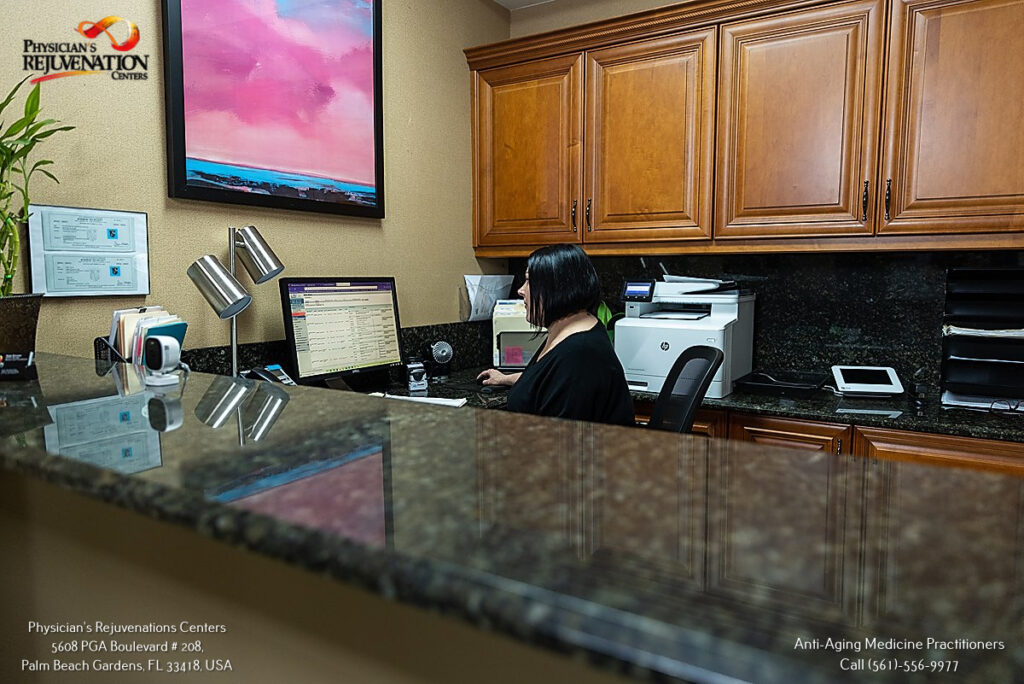Feeling sluggish, depressed, and not quite like yourself lately? Low testosterone could be to blame. If so, testosterone replacement therapy may provide the boost you need to restore your energy, sex drive, and overall zest for life.
This comprehensive guide covers everything you need to know about qualifying for testosterone replacement therapy. We’ll explore the symptoms of low testosterone, how it’s diagnosed through blood tests, what treatment options are available, and what to expect during the process.
By the end, you’ll have a clear understanding of how to determine if you’re a candidate for testosterone replacement. With the right treatment plan from a hormone health expert, it is possible to get your mojo back. Read on to learn if testosterone therapy is right for you.
Low T: An Overview
Low testosterone, also known as hypogonadism, refers to lower-than-normal levels of testosterone in the body. The normal T levels for adult males is 300 to 1,000 nanograms per deciliter (ng/dL) or 10 to 35 nanomoles per liter (nmol/L), while adult females should have 15 to 70 ng/dL or 0.5 to 2.4 nmol/L.
Testosterone is the primary sex hormone in men that regulates sperm production and development of male sex characteristics. Left untreated, long term effects can include increased risk of osteoporosis and cardiovascular disease.
What Are the Symptoms of Low Testosterone?
Before undergoing testosterone replacement, it’s important to exhibit clear symptoms of deficient testosterone levels. Some signs to look out for include:
- Reduced sex drive and erectile dysfunction
- Decreased energy and constant fatigue
- Loss of muscle mass and strength
- Increased body fat, especially around the waist
- Hair loss or diminished body and facial hair
- Irritability, depression, and mood changes
- Difficulty concentrating or focusing
- Insomnia and sleep disturbances
If you’re experiencing several of these symptoms, low testosterone may be to blame. But you’ll need blood work to confirm. Keep reading to learn how testosterone testing works.
What Is the Testosterone Range for Testosterone Therapy Patients?
To qualify for testosterone replacement therapy, blood tests must indicate a testosterone deficiency. But what testosterone level is considered “low”?
According to experts, a total testosterone (TT) level below 250-350 ng/dL signals hypogonadism or clinically low testosterone. Once therapy begins, testosterone levels should be restored to the mid-normal range based on your age bracket. This usually falls between 400-1,200 ng/dL.
| Age Range | Normal Testosterone Level |
| 7-10 years old | 1.80 to 5.68 ng/dL (boys), 2.69 to 10.29 ng/dL (girls) |
| 13-17 years old | 208.08 to 496.58 ng/dL (boys), 16.72 to 31.55 ng/dL (girls) |
| 20-24 years old | 409-558 ng/dL |
| 25-29 years old | 413-575 ng/dL |
| 30-34 years old | 359-498 ng/dL |
| 35-39 years old | 352-478 ng/dL |
| 12-13 years old | 7 to 800 ng/dL |
| 15-16 years old | Reach adult male levels |
| Adult men | 250-836 ng/dL |
Men with lower baseline testosterone see the greatest benefits by reaching mid-normal levels around 500-700 ng/dL. For transgender, nonbinary, and gender fluid patients, intermediate testosterone levels may be preferable.
What Are the Criteria for Determining Eligibility for Testosterone Therapy?

You must meet several criteria to qualify for prescription testosterone replacement under medical supervision:
- Blood tests confirm low testosterone levels below 300 ng/dL along with related symptoms
- A doctor has diagnosed you with hypogonadism or testosterone deficiency
- A full medical evaluation has been performed, including examination of your medical history
- The prescription is written by a licensed physician after determining testosterone therapy is appropriate
- Ongoing monitoring will be conducted to evaluate treatment effectiveness and safety
- Lifestyle modifications have been explored as an initial treatment approach
- Medical insurance coverage has been confirmed if cost is a concern
By meeting these criteria, you can feel confident testosterone therapy is the right choice.
Requirements for Testosterone Replacement Therapy
Specifically, four key requirements must be met prior to pursuing testosterone replacement:
| Requirements for Testosterone Replacement Therapy | |
| 1 | Laboratory evidence of low testosterone levels below 300 ng/dL |
| 2 | Symptoms such as erectile dysfunction, reduced libido, and fatigue |
| 3 | A complete medical workup and diagnosis of hypogonadism from your physician |
| 4 | Testosterone prescribed in an appropriate form based on your health profile |
Additional factors your doctor will consider include other medications you take, medical conditions that could influence testosterone, and any concerns about starting therapy. With a thorough evaluation, an effective and safe treatment plan can be developed.
What Is the Screening Process for Testosterone Replacement Therapy?
The screening process involves carefully evaluating your health from multiple angles to determine if you are a suitable candidate for testosterone therapy. You can expect:
- A thorough review of your full medical history, including any conditions you have or have had in the past, all medications and supplements you currently take or have taken, and any symptoms or issues you are experiencing that may be related to low testosterone.
- A comprehensive physical examination focused on identifying signs of hypogonadism and conditions that may affect testosterone levels. This will likely include examinations of your genitals for abnormalities, breast tissue for gynecomastia, body fat distribution, and signs of other hormonal imbalances.
- Lab testing to measure your total and free testosterone levels, as hypogonadism is defined by low testosterone along with symptoms. Testing estradiol and sex hormone binding globulin to assess overall hormone balance. Testing complete blood count, metabolic panel, and prostate-specific antigen to rule out complications.
- Additional specialized testing based on your specific situation and risk factors. This may include sperm count testing, genetic testing, MRI scans of the pituitary gland, bone density scans, sleep studies, and more. The goal is to uncover any underlying causes.
Once treatment begins, follow-up blood work is performed regularly to monitor your testosterone levels, confirm they are within ideal treatment ranges, and check for potential side effects like polycythemia, elevated estradiol, or liver enzyme alterations. Testing frequency is usually higher at the start of treatment and then periodically.
Regain Your Vitality with Physician’s Rejuvenation Centers

Physician’s Rejuvenation Centers are passionate about helping you look your best, feel your best, and live your best life. We offer cutting-edge hormone replacement therapies, targeted supplements, diet and nutrition support, and customized wellness plans.
Using a preventive approach, we can end the frustrating symptoms of andropause and restore your natural vitality. If you’re experiencing low testosterone symptoms, request a consultation today.
Our caring medical team is ready to work with you one-on-one. We serve patients across the country and accept most major insurance plans. Reach out now to see how hormone optimization can help you regain your energy, strength, and confidence.
FAQs
Who can qualify for Testosterone Replacement Therapy?
Men with low testosterone levels, typically below 300 ng/dL, who are experiencing symptoms associated with testosterone deficiency may qualify for TRT. Symptoms include fatigue, low libido, depression, and difficulty concentrating. A healthcare provider can determine eligibility through blood tests and a comprehensive medical evaluation.
How can one qualify for Testosterone Replacement Therapy?
To qualify for TRT, a person must first have a blood test to determine their testosterone levels. If levels are low and the person is experiencing symptoms such as fatigue, depression, or low libido, a healthcare provider may suggest TRT as a treatment option.
Can women qualify for Testosterone Replacement Therapy?
Though TRT is typically prescribed for men, women can also experience low testosterone levels. However, healthcare professionals usually recommend other treatments for women due to the potential side effects associated with testosterone therapy.
What are the potential side effects of Testosterone Replacement Therapy?
Potential side effects of TRT can include acne, sleep apnea, breast enlargement, and testicular shrinkage. There is also a risk of developing blood clots or experiencing an alteration in cholesterol levels. It’s important to discuss these potential side effects with a healthcare provider before starting TRT.
How long does it take to see results from Testosterone Replacement Therapy?
The timeline for seeing results from TRT can vary from person to person. Some men may notice improvements within a few weeks, while others may take several months. It’s important to have regular check-ups with a healthcare provider to monitor progress and adjust the treatment plan as necessary.

